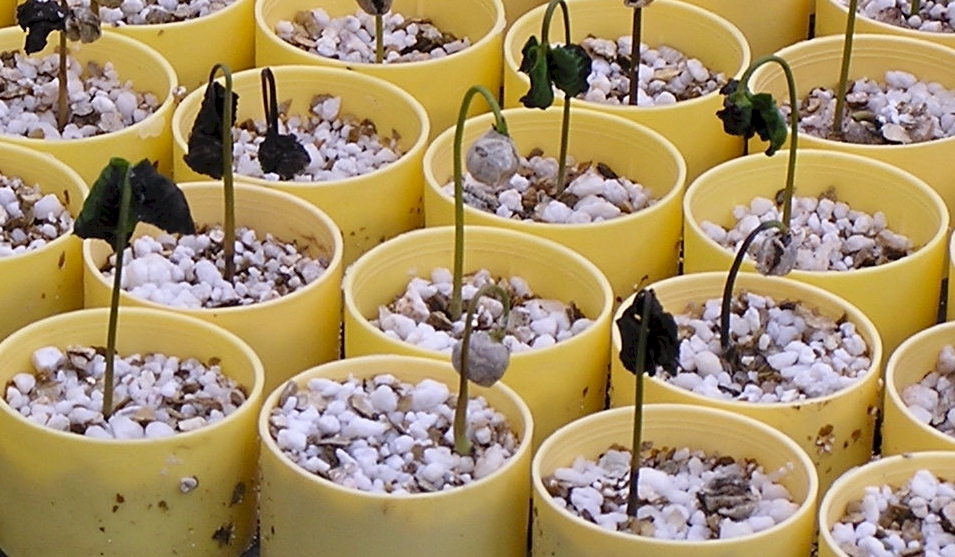Homepage → Gardening Related Topics → What Exactly is Damping-off?
What Exactly is Damping-off?
Planted July 27, 2001
Last tended to on October 11, 2024
Reading time: 3 minutes

“Damping-off” is a single, collective term used to describe underground, soil line, or crown rots of seedlings due to unknown causes. It can afflict just about any type of plant seedling. Sometimes its appearance and results are fast – as in overnight, and as if a stem was cut or pinched off at the soil line. Other times, seedlings grow and appear to be healthy, but then their progress slows, they wilt and ultimately perish, as in the photo above. Depending on the organism, it can even rot and kill seeds in the soil prior to germination.
Many different soil borne microorganisms and fungi can cause these symptoms of sudden plant death. Some of the more common organisms are listed below:
-
Pythium Root Rot (Pythium spp.) – Similar to Rhizoctonia in that it causes both damping-off as well as foot rot in plant cuttings. However, infection occurs in cool, wet, poorly-drained soils, and by over-watering. Infection results in a wet odorless rot. Species of Pythium can survive for several years in soil and plant debris.
-
Phytophthora Root Rot (Phytophthora spp.) – Usually associated with root rots of established plants but are also involved in damping-off in seedlings. These species enter the root tips and cause a water-soaked brown to black rot similar to Pythium. Survives indefinitely in soil and plant debris.
-
Rhizoctonia Root Rot (Rhizoctonia solani) – A fungi which causes damping-off of seedlings and foot rot of plant cuttings. Infection occurs in soils with warm to hot temperatures and moderate moisture levels. The fungi is found in all natural soils and can survive indefinitely. Infected plants often have slightly sunken lesions on the stem at or below the soil line. Transferring this fungi from nature to your germination area or greenhouse is as simple as using the same tools out of doors as you do in. Do not use your germination area to mix potting soils or transplant seedlings. Cleanliness is key here.
There are also other fungi which cause similar symptoms. These include Sclerotinia (white mold), Sclerotium rolfsii, Macrophomina phaseoli, some species of Botrytis (gray mold), Aphonomyces, Fusarium, and Cylindrocladium.
Preventative measures include:
- Utilizing sterile, soilless mixes for seed starting and rooting of cuttings.
- Sterilize tools, trays and pots with a 10:1 ratio of water and household chlorine bleach.
- Provide adequate airflow and ventilation in the germination area using fans if necessary.
- Provide optimum soil temperatures for the plant variety that you are germinating.
- Avoid over watering and bottom watering. Saturate the soil but allow good drainage and do not apply more water until just before the seedlings approach their wilt stage.
- If you are having issues with direct sown seeds in your garden, observing a good crop rotation program, as well as thoroughly removing old plant debris from the garden area, can help to improve your future results.
Additional Information:
- “Damping-off of seedlings,” University of Minnesota Extension.
Copyright © 1998 - 2024 - All rights reserved
WebGrower.com℠ is a service mark of Victory Horticultural Group, LLC.
• Privacy Statement •
This site participates in the Amazon Services LLC Associates Program, an affiliate advertising program designed to provide a means for sites to earn advertising fees by advertising and linking to amazon.com.